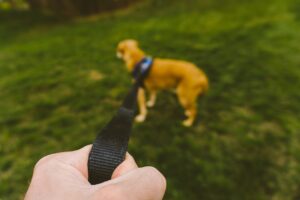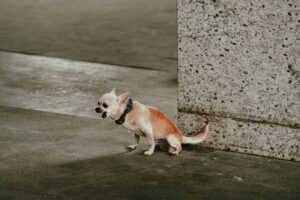The rainy season brings with it a unique and often unpleasant smell that many dog owners have come to recognize. This odor is primarily caused by a combination of moisture, bacteria, and the natural oils present in a dog’s coat. When rainwater saturates the ground, it can stir up various organic materials, including mold and mildew, which can cling to a dog’s fur.
Additionally, the dampness creates an ideal environment for bacteria to thrive, leading to that distinctive wet-dog smell that can linger long after the rain has stopped. Moreover, dogs have a natural tendency to roll in wet grass or muddy puddles, further exacerbating the issue. Their fur can trap moisture and odors, making it difficult to eliminate the smell without proper grooming.
Understanding the root cause of this odor is essential for dog owners, as it allows them to take proactive measures to keep their pets clean and fresh during the rainy season. By recognizing the factors contributing to this smell, owners can better prepare for the challenges that come with caring for their furry companions in wet weather.
Key Takeaways
- The smell during the rainy season is caused by bacteria and yeast growth on your dog’s skin and coat.
- Choose a shampoo specifically formulated for dogs, avoiding human shampoos that can be too harsh for their skin.
- Prepare your dog for bath time by brushing out any mats or tangles and trimming their nails beforehand.
- Follow a step-by-step guide for bathing your dog, including wetting their coat, applying shampoo, and rinsing thoroughly.
- Dry your dog properly using a towel or blow dryer on a low heat setting to prevent skin irritation.
Choosing the Right Shampoo for Your Dog
Selecting the appropriate shampoo for a dog is crucial in combating the rainy-season smell. Not all shampoos are created equal; some may contain harsh chemicals that can irritate a dog’s skin or strip away essential oils. It is advisable for dog owners to look for shampoos specifically formulated for their pet’s coat type and skin sensitivity.
Natural or hypoallergenic options are often best, as they tend to be gentler and less likely to cause adverse reactions. In addition to being gentle, a good dog shampoo should also have deodorizing properties. Many products on the market are designed to neutralize odors rather than simply mask them.
Ingredients such as baking soda, aloe vera, or essential oils can help eliminate unpleasant smells while also providing nourishment to the coat. Owners should also consider their dog’s specific needs; for instance, dogs with sensitive skin may benefit from oatmeal-based shampoos, while those with oily coats might require a clarifying formula. By choosing the right shampoo, owners can significantly reduce the chances of their dogs developing that characteristic rainy-season odor.
Preparing Your Dog for Bath Time

Preparation is key when it comes to bathing a dog, especially during the rainy season when they may be more prone to dirt and odors. Before starting the bathing process, it is essential for owners to gather all necessary supplies. This includes shampoo, towels, a brush, and possibly a non-slip mat for the bathing area.
Having everything on hand will make the experience smoother and less stressful for both the dog and the owner. Additionally, it is important to create a calm environment before bath time. Many dogs may be apprehensive about getting wet, so taking time to reassure them can make a significant difference.
Owners can start by gently brushing their dog to remove any tangles or loose fur, which will help prevent matting during the bath. Offering treats or engaging in playtime beforehand can also help ease any anxiety. By preparing both the space and the dog for bath time, owners can ensure a more pleasant experience that minimizes stress and maximizes cleanliness.
Bathing Your Dog: Step-by-Step Guide
| Step | Description |
|---|---|
| 1 | Gather all necessary bathing supplies |
| 2 | Brush your dog before the bath |
| 3 | Use a non-slip mat in the tub |
| 4 | Use lukewarm water to wet your dog |
| 5 | Apply dog shampoo and lather thoroughly |
| 6 | Rinse your dog completely |
| 7 | Dry your dog with a towel or blow dryer |
| 8 | Give your dog a treat for a positive experience |
Bathing a dog requires a systematic approach to ensure that every part of their body is cleaned effectively. First, owners should wet their dog’s coat thoroughly using lukewarm water. It is important to avoid using water that is too hot or too cold, as this can be uncomfortable for the dog.
Starting from the neck and working downwards helps prevent water from running into their ears and eyes, which can be distressing. Once the coat is wet, owners should apply an appropriate amount of shampoo and lather it into the fur gently. It is crucial to pay attention to areas that are prone to odor accumulation, such as under the tail, between the toes, and around the ears.
After thoroughly massaging the shampoo into the coat, owners should rinse their dog completely to remove all soap residue. Leaving shampoo in the fur can lead to irritation and further odors. Finally, a thorough rinse ensures that all dirt and bacteria are washed away, leaving behind a clean and fresh-smelling dog.
Drying Your Dog Properly
After bathing, drying a dog properly is just as important as cleaning them. A wet dog can quickly become cold and uncomfortable, especially in cooler weather typical of the rainy season. Owners should start by gently towel-drying their dog to absorb excess water.
It is advisable to use an absorbent towel that can handle moisture well while being soft against the dog’s skin. For dogs with longer or thicker coats, using a blow dryer on a low setting can be beneficial. However, it is essential to keep the dryer at a safe distance from the dog’s skin to avoid burns or discomfort.
Some dogs may be frightened by the sound of a blow dryer; in such cases, towel drying may be sufficient. Regardless of the method used, ensuring that the dog is thoroughly dried will help prevent odors from developing due to lingering moisture.
Dealing with Ear and Eye Care

Bath time presents an excellent opportunity for dog owners to check their pets’ ears and eyes for any signs of issues that may arise during the rainy season. Moisture can lead to ear infections if not addressed properly. Owners should gently clean their dog’s ears with a veterinarian-recommended ear cleaner and cotton balls, being careful not to insert anything deep into the ear canal.
Eye care is equally important; dogs can develop tear stains or irritation from water exposure during baths. Owners should wipe around their dog’s eyes with a damp cloth to remove any debris or discharge that may have accumulated. Regular checks during bath time can help catch potential problems early on, ensuring that dogs remain healthy and comfortable throughout the rainy season.
Brushing and Grooming After Bathing
Once bath time is complete and the dog is dry, brushing becomes an essential part of maintaining their coat’s health and appearance. Brushing helps remove any remaining loose fur and prevents matting, which can be particularly problematic in damp conditions. For dogs with longer hair, using a slicker brush or comb can help detangle any knots that may have formed during washing.
In addition to brushing, grooming provides an opportunity for owners to inspect their dog’s skin for any signs of irritation or parasites such as fleas or ticks. Regular grooming not only keeps a dog’s coat looking its best but also promotes healthy skin by distributing natural oils evenly throughout their fur. By incorporating brushing into their post-bath routine, owners can ensure their dogs remain clean and comfortable while minimizing any lingering rainy-season smells.
Keeping Your Dog Dry Indoors
After a bath or even after being outside in wet conditions, keeping a dog dry indoors is crucial in preventing odors from developing. Owners should designate specific areas in their homes where wet dogs are allowed, ideally with easy-to-clean surfaces like tile or laminate flooring. Providing a cozy blanket or dog bed in these areas can help keep dogs comfortable while they dry off.
Additionally, using pet-friendly towels or blankets can help absorb moisture before it spreads throughout the house. Owners might also consider investing in pet-specific drying coats designed to wick away moisture quickly. These coats can be particularly useful after walks in rainy weather or after baths, ensuring that dogs stay warm and dry indoors while minimizing any unpleasant smells.
Managing Wet-Dog Smell in the House
Despite best efforts in grooming and drying, some homes may still carry that unmistakable wet-dog smell during rainy seasons. To combat this issue effectively, owners should focus on maintaining cleanliness throughout their living spaces. Regular vacuuming and washing of pet bedding can help eliminate odors trapped in fabrics and carpets.
Air purifiers equipped with HEPA filters can also assist in reducing pet odors by capturing airborne particles associated with smells. Additionally, using odor-neutralizing sprays specifically designed for pets can provide an extra layer of freshness in areas where dogs spend time. By implementing these strategies consistently, owners can create a more pleasant indoor environment free from lingering wet-dog odors.
Preventing Future Rainy-Season Smell
Preventing future rainy-season smells involves proactive measures that go beyond occasional baths. Regular grooming sessions throughout the season can help keep a dog’s coat clean and free from debris that contributes to odors. Owners should also consider scheduling more frequent baths during particularly wet periods while ensuring they use appropriate shampoos that combat odors effectively.
Furthermore, keeping outdoor areas clean where dogs play can minimize dirt and bacteria transfer onto their coats. Regularly washing outdoor toys and bedding will also help reduce potential sources of odor accumulation. By adopting these preventive measures, dog owners can significantly decrease the likelihood of encountering unpleasant smells during rainy seasons.
Seeking Professional Help if Necessary
In some cases, despite diligent grooming and care efforts, persistent odors may indicate underlying health issues that require professional attention. If a dog continues to emit strong smells even after regular baths and grooming sessions, it may be time for owners to consult with a veterinarian. Conditions such as skin infections or allergies could be contributing factors that need addressing.
Veterinarians can provide valuable insights into specific treatments or dietary changes that may alleviate odor issues while ensuring overall health remains optimal. Seeking professional help when necessary demonstrates responsible pet ownership and ensures that dogs receive the care they need during challenging weather conditions like those found in rainy seasons.
If you’re looking to keep your furry friend smelling fresh during the rainy season, establishing a consistent dog bathing routine is essential. Regular baths help eliminate that damp, musty odor that often accompanies wet weather. In addition to maintaining cleanliness, consider using a dog-friendly shampoo with natural deodorizers to enhance the freshness. For more tips on creating a comfortable and enjoyable environment for your pet, you might find inspiration in other areas of home improvement. For instance, adding a home theater can provide the ultimate entertainment experience for you and your family. Check out this related article on how to enhance your living space: How to Add a Home Theater for the Ultimate Entertainment Experience.
FAQs
What is the best bathing routine for dogs during the rainy season?
During the rainy season, it is best to bathe your dog once every 2-4 weeks, depending on their activity level and how dirty they get. It is important not to over-bathe your dog as it can strip their skin of natural oils.
What kind of shampoo should I use for my dog during the rainy season?
It is best to use a mild, moisturizing shampoo specifically formulated for dogs. Avoid using human shampoos as they can be too harsh for a dog’s skin and coat.
How often should I brush my dog during the rainy season?
Regular brushing is important during the rainy season to prevent matting and tangles. Aim to brush your dog at least 2-3 times a week, or more frequently if they have a longer or thicker coat.
Are there any specific tips for drying my dog after a bath during the rainy season?
After bathing your dog during the rainy season, make sure to thoroughly dry them with a towel or a blow dryer on a low heat setting. It is important to ensure they are completely dry to prevent any damp, musty smells.
What are some additional tips for keeping my dog smelling fresh during the rainy season?
In addition to regular bathing and grooming, you can also use dog-friendly deodorizing sprays or wipes in between baths to keep your dog smelling fresh. Regularly cleaning their bedding and toys can also help prevent any lingering odors.






